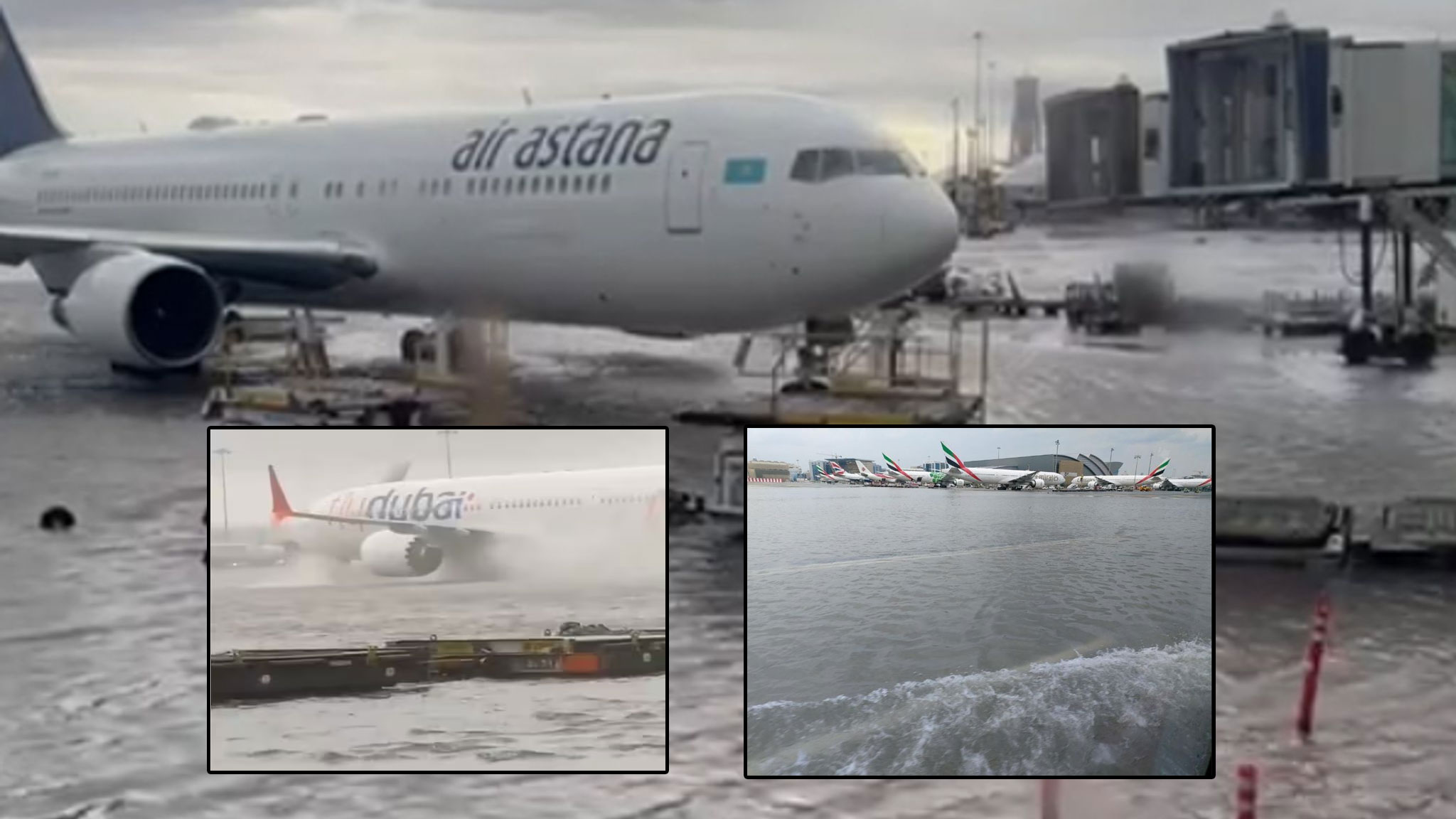
Dubai International Airport is recognized as one of the many busiest aviation centers in the whole world being the main doorway to attracting millions of tourists or various tour packages in Dubai. The operations happening in the airport had been seriously disrupted due to these heavy rainfalls, leading to chaos around the city and impacting the crucial infrastructure. There had been a relentless downpour that started late Monday and has been persistent for 48 hours. Which have eventually led to flooded runways and many flight cancellations. That made passengers really upset as their travel plans were disturbed.
The most concerning part of this even for Pakistani travelers going to Dubai has been immense as score of flights from Pakistan to Dubai had been cancelled since last 2-3 days. These flights were supposed to depart from all major airports in Pakistan such as Lahore, Karachi and Islamabad. Moreover, the travelers are still in chaos and uncertainty for their next departure as the conditions at Dubai airport are still way beyond the normal ones.

These severe floods were described as a “historic weather event” by the state–run WAM news agency. UAE has been experiencing their most intense rainfall since the record started in 1949. The rainfall was so serious that it exceeded the annual average in just one day. The storms were components of a larger weather system that swept across the United Arab Emirates, which were powered by strong jet streams. That resulted in inundation in various areas and caused a lot of chaos in the country.
There were many videos and images that were circulating on social media representing disarray at Dubai International Airport, including flooding terminals along with passengers waiting patiently and aircraft navigating waterlogged taxiways. The airport, essential for global connectivity, experienced a buildup of flights as airlines wrestled with the aftermath of cancellations and delays. Passengers described the situation as chaotic, with long queues, limited amenities, and a shortage of communication from airline staff, which was worsening the situation.
The impact of rainfall just didn't stop at the airport, the roads were all filled with rainwater and residents were also struggling with flooded streets and homes. The city’s infrastructure was designed and constructed according to its arid climate. Due to their unawareness and them being ill-prepared for this high magnitude of the flood, led to damage and chaos.
Concerns have been raised for the role of cloud seeding, which is a weather modification technique used in UAE to increase rainfall, in aggravating the heavy rain. However, meteorologists and experts have indicated that the intensity of the storms were mainly influenced by natural weather patterns, also that climate change plays a crucial role in the increased frequency and severity of extreme weather events on the global scale.
Authorities are taking steps to evaluate and repair the damaged infrastructure and encouraging their residents to stay alert in response to the weather forecast inorder to overcome this ongoing crisis. The UAE's President Sheikh Mohammed bin Nahyan has called for swift action to reduce the impact of the floods and ensure the safety of their residents and travelers.
As Dubai faces the aftermath of the extraordinary rainfall, inquiries arise in the population living there capacity to withstand climate change and the necessity for enhanced readiness to alleviate future weather-related disasters. As the world’s climate problems get worse, the crisis happening in Dubai reminds us of the immediate necessity for efforts worldwide to adapt to and try to reduce the effect of climate change.
The economic consequences of flooding are also significant as there were disruptions to air travel causing financial losses for airlines, related businesses and has destroyed the tourism sector. Dubai International Airport is currently encountering extraordinary difficulties in maintaining their operations running during the heavy rainfall. Nevertheless, it deals with millions of passengers annually but recently acting as an important connection point between continents. With the shutdown of runways and terminals, there were a series of cancellations and delays which left travelers stranded and airlines scrambling to help affected passengers.
The stuck passengers at the airport expressed their frustration over the lack of information and support from the airlines, some even taking it to social media conveying their grievances. The chaotic scenes at Dubai International Airport highlighted the significance of efficient crisis management and communication procedures during emergencies.
Aside from the immediate effects on air travel, the floods revealed how vulnerable Dubai's infrastructure is to extreme weather conditions. Dubai, which was renowned for its modern skyline and rapid development, is now facing escalating risks from climate change, which includes rising temperatures, sea-level rise, and more frequent extreme weather events.
Furthermore, authorities in Dubai are likely to review and reconsider their disaster preparedness strategies and may choose to invest in stronger infrastructure to reduce the impact of future extreme weather events. These recent events highlight the need for governments, businesses and communities worldwide to prioritize climate adaptations and measures in response to the changing climate.
In conclusion, the extraordinary rainfall that swept through Dubai and disrupted operations at Dubai International Airport emphasized the urgent need for climate action and sturdy infrastructure to confront the rising challenges of climate change. As the world faces the challenges of climate change, collaborative efforts are essential to construct a future that is more robust and sustainable for the future of this world.
More Travel News
-
 29-Jul-2020Northern Areas Tour Packages 2020, Here is the Details of Best Tour Packages
29-Jul-2020Northern Areas Tour Packages 2020, Here is the Details of Best Tour Packages -
 06-Oct-2019How to check Umrah Visa Status online
06-Oct-2019How to check Umrah Visa Status online -
 19-Feb-2025Punjab Government Plans Glass Train from Islamabad to Murree: A Scenic Journey Awaits
19-Feb-2025Punjab Government Plans Glass Train from Islamabad to Murree: A Scenic Journey Awaits -
 27-Mar-2022New Ramadan Iftar Project guidelines Issued by Ministry of Islamic Affairs
27-Mar-2022New Ramadan Iftar Project guidelines Issued by Ministry of Islamic Affairs -
 28-Jan-2020UK Ease Travel Advice After Improved Security in Pakistan
28-Jan-2020UK Ease Travel Advice After Improved Security in Pakistan -
 05-Feb-2021Saudi Arabia Impose Temporary Ban Entry from 20 Countries
05-Feb-2021Saudi Arabia Impose Temporary Ban Entry from 20 Countries -
 28-Feb-2020Top 10 Ziyarat To Visit During Your Umrah Trip
28-Feb-2020Top 10 Ziyarat To Visit During Your Umrah Trip -
 29-Sep-2024Sri Lanka Reactivates ETA Visa System After Temporary Suspension: What Travelers Need to Know
29-Sep-2024Sri Lanka Reactivates ETA Visa System After Temporary Suspension: What Travelers Need to Know
